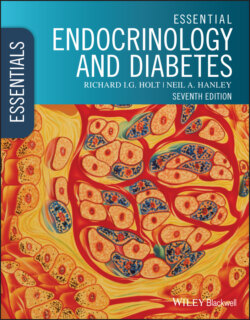Читать книгу Essential Endocrinology and Diabetes - Richard I. G. Holt - Страница 20
Peptide hormones
ОглавлениеThe majority of hormones are peptides and range in size from tiny, only three amino acids [thyrotrophin‐releasing hormone (TRH)], to small proteins of >200 amino acids, such as TSH or luteinizing hormone (LH). While some peptide hormones are secreted directly, a typical feature is their storage in granules, the release from which is commonly controlled by another hormone, as part of a cascade, or by innervation.
Some peptide hormones have complex tertiary structures or comprise more than one peptide chain encoded by multiple genes. Oxytocin and vasopressin, the two posterior pituitary hormones, have ring structures linked by disulphide bridges. Despite being remarkably similar in structure, they have markedly different physiological roles (Figure 1.3). Insulin consists of α‐ and β‐chains linked by disulphide bonds. Like several hormones, it is synthesized as an inactive precursor that requires modification prior to release and activity. To some extent, this regulation protects the synthesizing cell from being overwhelmed by the action of its own hormone. The gonadotrophins, follicle‐stimulating hormone (FSH) and LH, TSH and human chorionic gonadotrophin (hCG) also have two chains. However, these α‐ and β‐subunits are synthesized separately from entirely different genes. The α‐subunit is common to each of the hormones. It is the distinctive β‐subunit of each that confers biological specificity.
